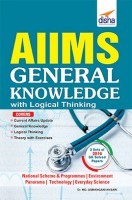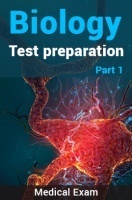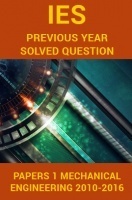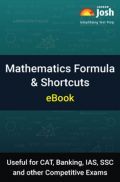This book topic-wise Solved Papers are the most important resources must for every student for 5 reasons:
1. They show what types of questions have been asked in the actual exam – knowledge/ understanding/ application/ analytical; theoretical/ numerical; Simple MCQ/ Assertion-Reason/ Passage based MCQ/ Matching MCQ/ Picture based/ Statement based MCQ.
2. They show the trend of the paper over the past years – helps in understanding the examiner’s psyche to understand what to expect and what not to expect in the exam.
3. To spot the most important and least important topics for the exam – the number of questions asked from each topic in the various years.
4. The book 26 JEE Main/ AIEEE Topic-wise Solved Papers is the MEGA preparatory material as it provides you the exact level/ trend/ pattern of questions asked on each topic in the ONLINE & OFFLINE mode of the examination from 2002 to 2014.
5. 1. The book contains 12 years of past AIEEE (2002-12 including the AIEEE 2011 RESCHEDULED paper) Solved Papers held offline, 4 AIEEE 2012 papers held ONLINE, JEE Main 2013 & 2014 papers held offline and 8 JEE Main 2013 & 2014 papers held ONLINE.
The book is highly popular among the student and teacher fraternity as a lot of similar problems have appeared in the various JEE Main/ AIEEE and JEE Advanced/ IITJEE exams.
The main features of the book are as follows:
1. The book is FULLY SOLVED and constitutes around 3000 most important MCQs.
2. The book has been divided into 3 parts - Physics, Chemistry and Mathematics.
3. The questions in each topic are immediately followed by their detailed solutions.
4. Each Chapter/ Topic provides questions pertaining to all the concepts related to it from 2002 to 2014 exams.
5. A total of 26 Question Papers (14 Offline also including the AIEEE 2011 RESCHEDULED paper + 12 Online) have been distributed into these topics.
6. The book follows the latest NCERT Format. Each subject is distributed into around 28, 31 and 27 topics each, exactly following the chapter sequence of the NCERT books of class 11 and 12. Thus making it 86 chapters/ topics in all.
Physics
1. Physical World, Unit and Measurement
2. Motion in a Straight Line
3. Motion in a Plane
4. Laws of Motion
5. Work, Energy and Power
6. System of Particles and Rotational Motion
7. Gravitation
8. Mechanical Properties of Solids
9. Mechanical Properties of Fluids
10. Thermal Properties of Matter
11. Thermodynamics
12. Kinetic Theory
13. Oscillations
14. Waves
15. Electric Charges and Fields
16. Electrostatics Potential and Capacitance
17. Current Electricity
18. Moving Charges and Magnetism
19. Magnetism and Matter
20. Electromagnetic Induction
21. Alternating Current
22. Electromagnetic Waves
23. Ray Optics and Optical Instrument
24. Wave Optics
25. Dual Nature of Radiation and Matter
26. Atoms
27. Nuclei
28. Semiconductor Electronics : Materials, Devices, Simple Circuits and Communication System
Chemistry
1. Atoms, Molecules & Chemical Arithmetic, Volumetric Analysis
2. Atomic Structure
3. Classification of Elements & Periodicity in Properties
4. Chemical Bonding
5. States of Matter
6. Chemical Energetics & Thermochemistry
7. Chemical & Ionic Equilibrium
8. Redox Reaction
9. Hydrogen
10. s - Block Elements
11. p - Block Elements : Group 13 and 14
12. Organic Chemistry — Some Basic Principles & Techniques
13. Hydrocarbons
14. Environmental Chemistry
15. Solid State
16. Solutions
17. Electro Chemistry
18. Chemical Kinetics
19. Surface Chemistry
20. Metallurgy
21. p - Block Elements : Group 15, 16, 17 and 18
22. The d and f-Block Elements
23. Coordination Compounds
24. Halogen Derivativs
25. Alcohols, Phenols & Ethers
26. Carbonyl Compounds, Aldehydes, Ketones & Carboxylic Acids
27. Amines
28. Biomolecules
29. Polymers
30. Chemistry in Everyday Life
31. Nuclear Chemistry
Mathematics
1. Sets, Relations & functions
2. Trigonometric functions
3. Principle of mathematical induction
4. Complex numbers & quadratic equations
5. Linear inequalities
6. Permutations & combinations
7. Binomial theorem
8. Sequence & series
9. Straight lines
10. Conic sections
11. Introduction to 3-dimensional Geometry
12. Limits & derivatives
13. Mathematical Reasoning
14. Statistics
15. Basic Probability
16. Relations & Functions
17. Inverse Trigonometric Functions
18. Matrices
19. Determinants
20. Continuity & Differentiability
21. Application Of Derivatives
22. Integrals
23. Application Of Integrals
24. Differential Equation
25. Vector Algebra
26. Three Dimensional Geometry
27. Advanced Probability


















